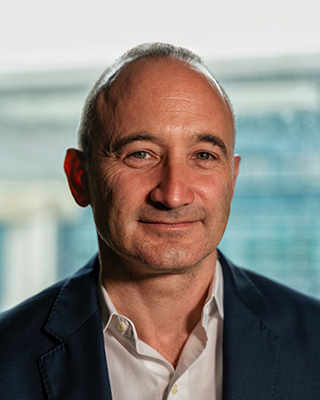LGBTQ+
Racial/Ethnic Disparities in Structural Barriers for PrEP
(PS9-61) Racial/ethnic Disparities in Structural Barriers for Prep

Juan A. Esquivel-Mendoza, M.S.
Ph.D. Student
University of Miami
Miami, Florida, United States- AP
Alexandra Porras, B.A.
Research Assistant
University of Miami
Miami, Florida, United States - HV
Hanna Vasconcello, B.A.
Research Assistant
University of Miami
Miami, Florida, United States - MP
Marc Puccinelli, Ph.D.
Clinical Assistant Professor
University of Miami
Miami, Florida, United States - MM
Matthew J. Mimiaga, M.P.H., M.A., Ph.D.
Professor
University of California Los Angeles
Los Angeles, California, United States - CP
Christina Psaros, Ph.D.
Associate Professor
Harvard Medical School
Boston, Massachusetts, United States - SD
Susanne Doblecki-Lewis, M.D., M.S.
Professor of Clinical Medicine
University of Miami
Miami, Florida, United States - DK
Douglas Krakower, M.D.
Assistant Professor
Harvard Medical School
Boston, Massachusetts, United States - KM
Kenneth H. Mayer, M.D.
Professor of Medicine
Harvard Medical School
Boston, Massachusetts, United States 
Steven A. Safren, ABPP, Ph.D.
Professor
University of Miami
Coral Gables, Florida, United States
Author(s)
Co-Author(s)
Pre-exposure prophylaxis (PrEP) is an effective tool for HIV-prevention in men who have men with men (MSM), but structural barriers, including insurance costs and copayments, unemployment, immigration status, and incarceration, impede reach and adversely impact health equity. Despite Black and Hispanic/Latinx MSM experiencing new HIV diagnosis rates of 42% and 27% in 2021 respectively, data from 2022 indicates that only 14% of PrEP MSM users were Black and 17% were Hispanic/Latinx, while 64% were White. Structural barriers may differentially interfere with PrEP uptake and retention in PrEP care for Black and Hispanic/Latinx MSM. This study aimed to examine the degree to which Black and Hispanic/Latinx experience PrEP-related structural barriers in a geographically diverse sample of MSM in the U.S.
MSM (N=264) currently prescribed PrEP and facing at least one psychosocial syndemic problem were recruited to participate in a randomized control trial to test the efficacy of a PrEP adherence intervention. Using baseline data, nine common structural barriers (immigration status, incarceration, legal, medical cost, PrEP costs, transportation, pharmacy access, homelessness, and insurance) were each assessed on a 5-point Likert scale (0 = “not at all” to 4 = “a great deal); scores were summed and ranged from 0-36. Multiple linear regression analysis was conducted to examine the relationship between reported structural barriers and three distinct racial groups: Hispanic/Latinx, Black, and Non-Hispanic White as the reference group. Additionally, we examined frequencies of endorsements of PrEP barriers among Black, Hispanic/Latinx, and Non-Hispanic White participants.
Identifying as Black compared to Non-Hispanic White was, on average, significantly associated with a 3.186 unit increase in structural barriers scores (b = 3.186, CI: 1.12,5.26, p = 0.003), and identifying as Hispanic/Latinx compared to Non-Hispanic White was associated with a 1.318-unit increase in structural barriers scores (b = 3.186, CI: 0.21,2.42, p = 0.02). The most frequently cited structural barriers to PrEP endorsed by Black and Hispanic/Latinx participants were medical costs (25%, 17.2%; compared to 15.2% for Non-Hispanic White), PrEP costs (25%, 19.8% compared to 15.9% for Non-Hispanic White), transportation (30%, 19% compared to 14.4% for Non-Hispanic White), and inadequate health insurance (35%, 26.7% compared to 16.7% for Non-Hispanic White).
This study demonstrates that while PrEP can decrease HIV incidence, structural barriers to PrEP persist across racial/ethnic groups. Despite existing systems promoting PrEP access, uptake disparities persist despite measures like Ready, Set, PrEP. Further, syndemics (e.g., depression, drug use, childhood sexual abuse) prevalent among MSM, likely exacerbate these inequities. Although we had a geographically diverse sample, it is likely that these inequities are more pronounced in places with higher HIV incidence, like the U.S. South. Addressing these disparities requires tailored interventions at multiple levels: individual/network (community education on affordable PrEP access), healthcare (telehealth), and structural (insurance expansion, addressing socioeconomic marginalization).

.png)
